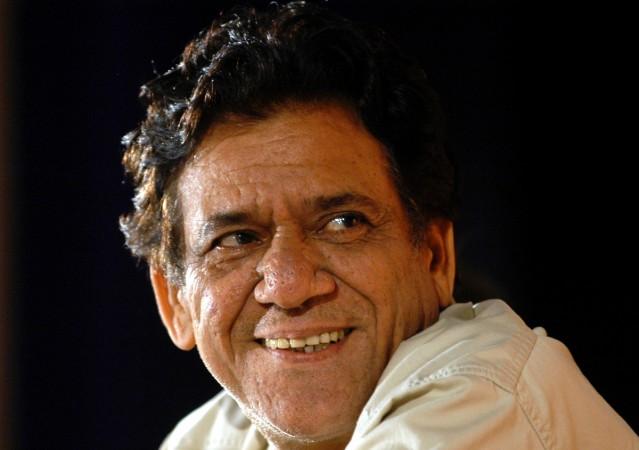
In a quiz two years back this question was asked: "Six of his seven siblings died of small pox, and he himself was stricken with it. As a two-year-old child in Ambala, his hands were tied to the cot by his mother so that he couldn't scratch the rashes. This childhood event also explains his famously pock-marked face, which has enthralled viewers for decades. Who is this?"
I too have my fair share of personal memories of him, whom I never spoke to in person, but saw him from afar at various film festivals and once at Basu Bhattacharya's house on Bandra Sea Face off Carter Road where Aastha was being filmed.
Going down memory lane, I was taken aback in the Amitabh Bachchan-fueled rage-against-the-machine days of the early-1980s when suddenly my "good boy" schoolmate Debjit Sur Roy Chowdhury unexpectedly uttered a "bad boy" filmi dialogue from a then-unknown Ardh Satya.
"Maine Rama Shetty ka khoon kiya!"
A revelation of how an actor can infuse the revolting attitude of a white-collar generation couched inside a resigned matter-of-fact expression.
That was the day when I discovered that an angry young temperament can have a very different texture, bereft of populist appeal and shorn of ornamental mannerisms.
Along with Shabana Azmi, Smita Patil and Naseeruddin Shah, he became an inseparable part of the Holy Quadrangle of Indian Parallel Cinema Movement throughout the 70s and 80s.
True that he didn't have the looks of a pin-up hero. But he had his own distinctive gut-wrenching style, uncommon voice and energy.
Moreover, he was affable and down-to-earth. Something that made him a darling among seasoned auteurs and Bollywood regulars.
With names that varied from Satyajit Ray to Anees Bazmee, he remained at the top of his craft to conquer decade after decade, sinking his teeth deep into the character.
His innate greatness lies in his deeply-rooted almost unshakable belief that there is no such thing as commercial or parallel cinema – life is only about good and bad cinema.
Rudyard Kipling may have written that "Oh East is East, and West is West, and never the twain shall meet," yet somewhere in between, the West took notice of this powerhouse from East. That led to his entry in many Hollywood and British productions, where he left his distinctive mark.
To me, his best performance in a foreign film was in the ironically titled East is East where he essayed the role of Zaheed "George" Khan, a Pakistani-British patriarch who is trapped inside his self-constructed sense of false dignity as he struggles to sort out his loves from his life.
And while his equally-talented contemporaries often made outrageous statements to hog the limelight or play political gamesmanship, our man quietly carried on with his duty with a torch in his hand: To lighten up our lives inside the dark recesses of cinema halls.
Safari-suit-clad secretary Banwarilal with a roving eye. A surreal Ahuja-turned-Duryodhan wearing dark sunglasses. An exploited tribal called Lahanya Bhiku with just a seething pair of eyes to do the talking. An empathetic Hazari Pal pulling a lone rickshaw-cart down the streets. DCP Abhay Singh cornered in a spine-chilling battle of nerves with a terrorist ring-leader.
Take your pick.
Tragically though fragments of his personal life were picked up as fodder for gossip mills. He got entangled in legal and financial battles. He wanted to rectify things his way, but the die had been cast by fate, and setting the clock back probably took a huge toll on his health.
And then one day.
But then, as his ardent admirer, no less than Kamal Hassan sums up his contribution brilliantly: "Who dare say my Om Puri is no more? He lives through his work."
So long and thanks for enriching the world of cinema in the truest sense.
#OmPuri
Tathagata Chatterjee is a Gurgaon-based advertising professional, in love with popular culture and purveyor of all things trivial. Views expressed are personal.
















